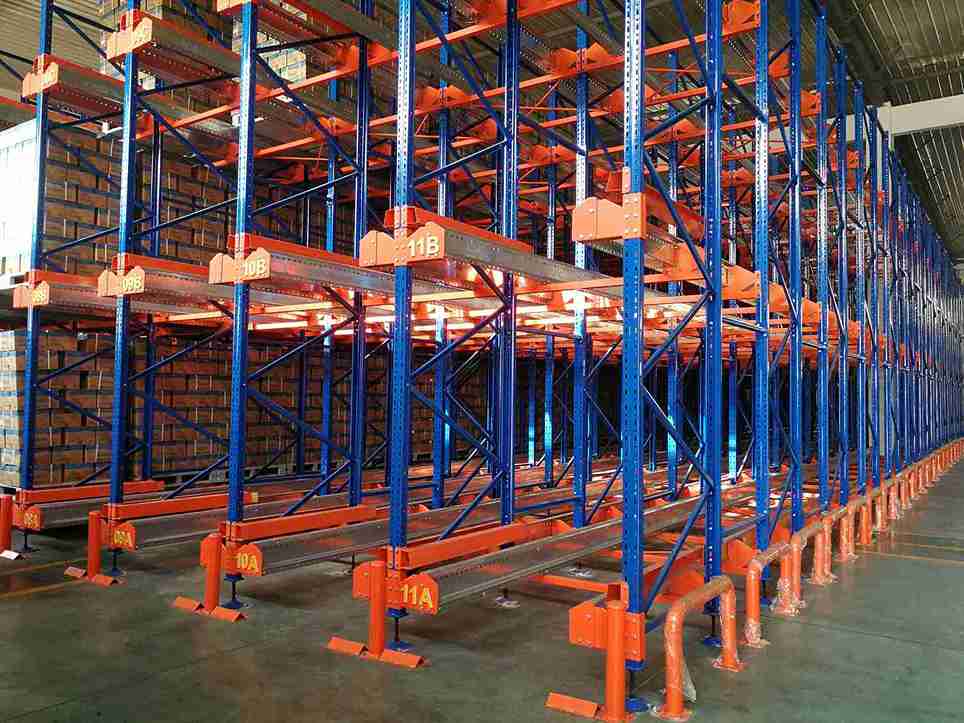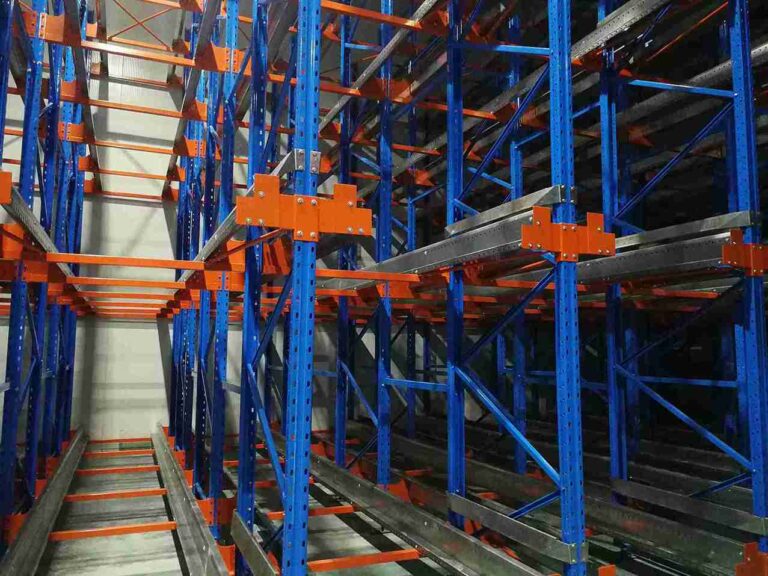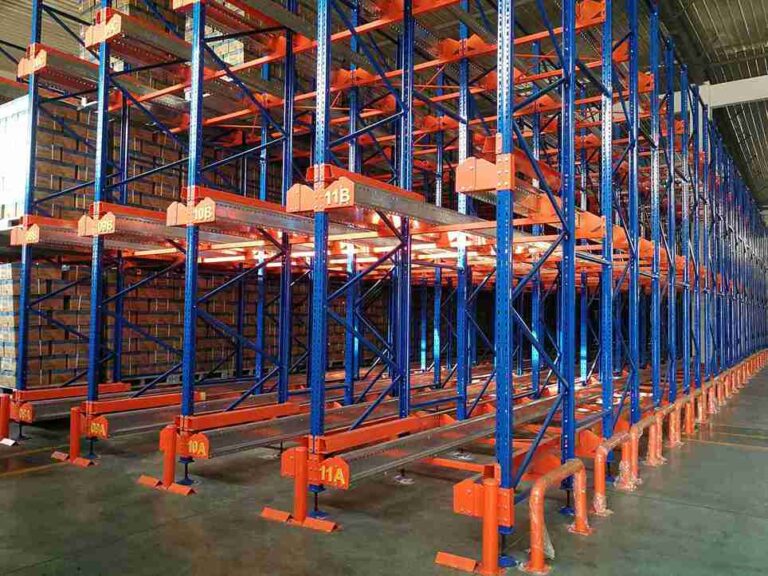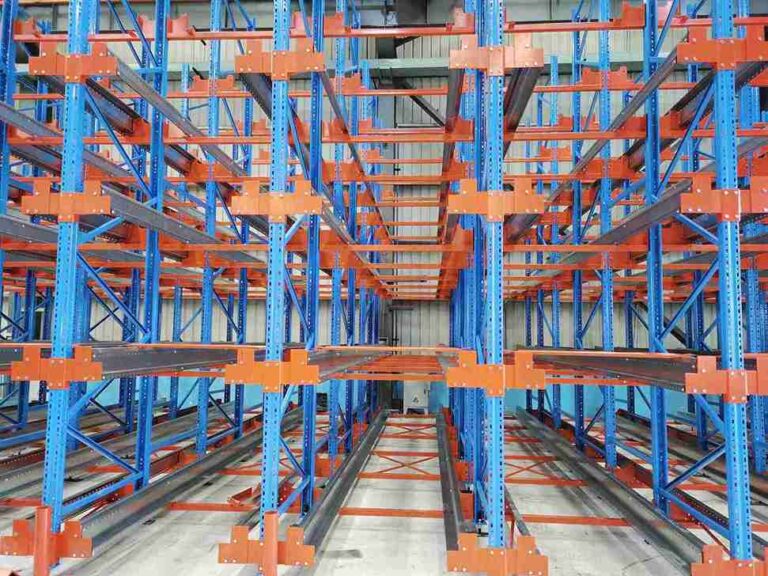📐 "First 50 Enterprise Queries Get Custom 3D Warehouse Design" Plan

The Automotive Logistics Revolution
For decision-makers in the automotive sector—from parts distributors to manufacturing plant managers—the warehouse is the beating heart of the operation. It’s where efficiency translates directly into profitability and where bottlenecks can trigger catastrophic production halts. The industry’s relentless pressure for just-in-time delivery, coupled with an explosion of SKU complexity, has rendered traditional storage solutions obsolete. The quest to maximize automotive parts storage density while you simultaneously boost picking speed is not merely an operational goal; it is a strategic imperative for survival and growth.
This comprehensive guide delves into the transformative power of a specifically engineered solution: shuttle racking for automotive parts. We will move beyond superficial overviews to provide a masterclass in how this technology is meticulously designed to address the unique, demanding challenges of storing everything from miniature electronic components to heavy engine blocks.
Our analysis will cover strategic implementation, seamless integration with broader automation ecosystems, and a clear-eyed evaluation of Return on Investment (ROI). This resource is crafted for professionals who need more than just a product brochure—they need a validated, detailed roadmap for transforming their storage infrastructure into a robust, scalable, and intelligent competitive advantage, making shuttle racking for automotive parts the cornerstone of their modern logistics strategy.

The Automotive Warehouse Crisis: Space, Speed, and Unforgiving Complexity
The landscape of shuttle racking for automotive parts did not emerge in a vacuum. It is a direct response to a perfect storm of logistical challenges unique to the auto industry. Warehouses are tasked with managing a staggering array of items: high-volume fasteners, sensitive electronic control units (ECUs), bulky bumper assemblies, and long, awkward exhaust systems. Demand is notoriously volatile, swinging wildly with model year changes, recall campaigns, and shifting consumer preferences.
The industry-wide adoption of lean manufacturing and JIT principles means inventory buffers are slim to nonexistent. A single missing part, regardless of its size or cost, can stop an assembly line, incurring penalties that run into tens of thousands of dollars per minute.
Traditional storage methods are fundamentally ill-equipped for this environment. Static shelving wastes immense vertical air space. Selective pallet racking, while a step up, dedicates over 60% of a facility’s footprint to aisles for forklift traffic, creating congestion, safety hazards, and inefficient travel paths for operators.
The result is a trifecta of crippling costs: exorbitant spending on real estate, unsustainable labor expenses due to low productivity, and financial losses from inventory inaccuracy and picking errors. This operational crisis is the critical business driver that has propelled advanced shuttle racking for automotive parts from a niche luxury to a mainstream, essential solution for any logistics operation aiming to remain competitive and profitable.
What is Shuttle Racking? An Automotive-Optimized Deep Dive
Understanding the mechanics of shuttle racking for automotive parts is key to appreciating its transformative impact. At its essence, it is a high-density, automated storage and retrieval system (AS/RS) comprised of two synergistic components: a rugged racking structure and intelligent, self-powered shuttle cars that operate within the storage lanes.
System Architecture: Engineered for Automotive Durability and Performance
The racking system for shuttle racking for automotive parts is a far cry from standard pallet racking. It is typically a custom-engineered, clad-rack structure that forms multiple deep storage lanes, often extending 30, 40, or even 50 pallets deep. These lanes are designed without front-facing aisles. Instead, they are serviced by the shuttle vehicles. A single shuttle can be deployed to manage multiple lanes on the same level, transferred via a lift at the end-of-aisle or a conveyor transfer car.
For multi-level operations, a central vertical lift elevator automatically collects and positions shuttles on different tiers, creating a towering, ultra-dense storage block that maximizes every cubic foot of available space. This architecture is uniquely suited for the inventory profiles common in automotive logistics, which often feature high quantities of medium-turnover SKUs that need secure, dense storage but predictable and reliable access.
The Intelligent Core: Warehouse Management System (WMS) Integration
The hardware is impressive, but the true genius of modern shuttle racking for automotive parts lies in its software intelligence. The shuttle vehicles are not independent actors; they are dutiful soldiers taking commands from a sophisticated Warehouse Control System (WCS). This WCS, in turn, receives its strategic orders from the facility’s overarching Warehouse Management System (WMS) or Enterprise Resource Planning (ERP) system. This deep integration is non-negotiable for automotive applications.
The WMS dictates put-away and retrieval strategies based on intricate rules: part number, velocity (ABC code), weight, dimensions, and even compatibility (e.g., preventing corrosive fluids from being stored above sensitive electronics). It enables flawless, perpetual inventory counting and provides real-time, 99.9%+ accurate visibility into stock levels—a critical capability for preventing the multi-million dollar losses associated with production line stoppages.
The Perfect Synergy: Why Shuttle Racking is Ideal for Automotive Parts
The design principles of shuttle racking for automotive parts align with surgical precision to the inherent challenges of automotive components logistics, creating a synergy that delivers unparalleled operational advantages.
Unmatched Storage Density: Slashing Real Estate Costs
The most immediately quantifiable benefit of implementing shuttle racking for automotive parts is the radical reduction in wasted aisle space. By eliminating the need for wide forklift aisles in front of every single rack face, these systems routinely increase storage density by 80% to 90% or more compared to traditional selective racking.
Where you once stored 5,000 pallets, you can now store 9,000 or more in the exact same building footprint. This directly defers the multi-million dollar capital expenditure of constructing a new warehouse or leasing additional space. Alternatively, the vast amount of freed-up floor space can be repurposed for high-value activities such as kitting, sub-assembly, sequencing, and cross-docking, further enhancing revenue streams and operational flexibility.
Revolutionizing Picking Speed, Accuracy, and Ergonomics
In the context of automotive parts logistics, speed is meaningless without accuracy. Shuttle racking for automotive parts operates on a fundamentally superior “goods-to-person” principle. Instead of dispatching order pickers on a daily marathon through the warehouse to find and retrieve items—a process riddled with inefficiency and error—the system brings the exact required pallet or tote directly to a fixed, ergonomic pick station at the end of the aisle. Here, the operator can work efficiently without walking, lifting, or bending excessively.
The WMS can batch orders from multiple sources, sequence picks based on delivery truck schedules or production line consumption rates, and present items in the most logical order. The result is a dramatic doubling or even tripling of picks per hour (PPH) and the virtual elimination of mis-picks, which are devastating in a sequence-fit or JIT environment.
Supreme Inventory Control and Granular Traceability
Every single movement within a shuttle racking for automotive parts system is digitally tracked and logged by the WMS. The location of every SKU is known to the exact lane, level, and position in real-time. This enables flawless and automated First-In, First-Out (FIFO) or Last-In, First-Out (LIFO) inventory management, which is critical for parts with shelf lives, such as certain chemicals, adhesives, or tires. This granular traceability is also a powerful tool for quality control and rapid recall response.
If a supplier identifies a faulty batch of components, a warehouse manager can instantly locate every single unit from that batch within the storage system and quarantine it digitally and physically, preventing it from causing expensive and reputation-damaging failures downstream.
Calculating the ROI: Quantifying the Value of Shuttle Racking for Automotive Parts
The initial investment in a shuttle racking for automotive parts system is substantial and requires rigorous financial justification. However, the ROI is typically compelling and multi-faceted, with most operations achieving a full payback within 2 to 4 years through hard and soft cost savings.
Real Estate Savings: Model the avoided cost of expansion. Calculate your current cost per square foot/meter and project how much more inventory you can store with a shuttle racking for automotive parts system. The capital avoided by not building a new facility is often the largest single component of ROI.
Labor Productivity Gains: Quantify the reduction in forklift operators required for put-away and deep-lane retrieval. While staff are still needed for receiving, shipping, and value-added services, the inefficient travel is eliminated. The increased picking speed at ergonomic stations means more orders are processed with fewer people, reducing labor costs and dependence on a scarce workforce.
Operational Cost Reduction: Include tangible savings from reduced forklift fuel, electricity, maintenance, and eventual replacement costs. Factor in the significant reduction in product damage caused by forklift impacts—a common and hidden cost in traditional warehouses.
Intangible Value Drivers: Assign a monetary value to improved inventory accuracy (which reduces carrying costs and stock-outs), enhanced customer satisfaction from perfect order fulfillment, and the strategic agility to scale operations seamlessly.
Integration is Everything: Weaving Shuttle Racking into Your Automated Ecosystem
The true potential of shuttle racking for automotive parts is fully realized when it is seamlessly integrated into a broader ecosystem of automation, creating a cohesive, end-to-end material flow solution.
AGVs and AMRs: The Automated Material Handlers
Automated Guided Vehicles (AGVs) and Autonomous Mobile Robots (AMRs) are the natural partners for a shuttle racking for automotive parts system. They act as the horizontal transportation layer. AGVs can be programmed to automatically transport received pallets from the dock to the input conveyor of the shuttle system. Upon retrieval, an AGV can be dispatched to pick up a pallet delivered by the shuttle’s lift and transport it directly to the shipping dock, staging lane, or production line interface, creating a continuous, hands-off flow from truck to rack and back to truck.
Conveyor and Sortation Systems: The High-Speed Arteries
For handling smaller parts stored in totes or boxes within the shuttle racking for automotive parts system, integration with an automated conveyor and sortation system is ideal. Retrieved totes are placed onto a conveyor network that automatically routes them to the appropriate workstation: a pick-to-light station for order consolidation, a packing station, or even directly to a loading spurt for production line delivery. This is perfect for managing the vast number of small components required in modern vehicle assembly.
The Command Center: WMS and ERP Integration
This entire symphony of automation is conducted by the software. Deep, bidirectional integration between the shuttle system’s Warehouse Control System (WCS), the site’s Warehouse Management System (WMS), and the corporate Enterprise Resource Planning (ERP) system is what transforms a collection of machines into an intelligent logistics hub. This ensures inventory data is real-time and accurate, orders are processed automatically, and the physical movement of goods is a direct and efficient execution of the company’s digital business processes.
Designing for Success: Critical Considerations for Automotive Applications
Specifying and designing an effective shuttle racking for automotive parts system requires careful analysis and expert consultation. It is not a one-size-fits-all solution.
Load Analysis and Structural Engineering: The system must be engineered to handle the extreme weights of automotive components like transmission assemblies, brake rotors, and engine blocks. This often requires custom-designed racks with capacities exceeding 1,500 kg per location, using high-strength steel.
SKU Profiling and Velocity Analysis: A thorough analysis of all SKUs—their dimensions, weight, turnover rate (ABC classification), and compatibility—is essential to design the optimal lane depth, determine the number of shuttles required, and create an effective slotting strategy within the shuttle racking for automotive parts framework.
Throughput Modeling: How many pallet movements (put-away and retrieval) are required per hour during peak periods? This data dictates the number of shuttles, the speed of the lift elevator, and the configuration of pick stations to ensure the system meets operational demands without becoming a bottleneck.
Future-Proofing and Scalability: A well-designed system is modular and scalable. It should allow for relatively easy expansion by adding more racking bays, additional shuttles, or another lift elevator as business volumes grow, protecting the long-term investment.
The Implementation Journey: From Blueprint to Operational Reality
Deploying a shuttle racking for automotive parts system is a significant project managed by experienced professionals. The process is phased to minimize disruption to ongoing operations.
It typically involves: initial consultation and data gathering, detailed engineering and design, site preparation (which may include floor leveling and power upgrades), phased racking construction, mechanical and electrical installation of the shuttles and lifts, software installation and integration, comprehensive system testing, and finally, extensive operator and maintenance staff training. A reputable provider will manage this entire timeline, ensuring a smooth transition to a fully automated storage environment.
A Holistic Strategy: Complementary Storage Solutions
While powerful, a shuttle racking for automotive parts system is often most effective as part of a mixed storage strategy. Other solutions can handle exceptions and specific product types perfectly.
Multi-Tier Cantilever Racking: An ideal complement for storing long, awkward-shaped items that are not palletized, such as exhaust pipes, chassis frames, and body panels, which may not be suitable for a standard shuttle racking for automotive parts system.
Mobile Pallet Racking: Provides ultra-high density for slower-moving inventory that doesn’t require the rapid throughput of the shuttle system but still needs to be stored efficiently.
Secure Static Shelving and Lockers: Remains the best solution for high-value, small parts (e.g., microchips, sensors) that require high security and controlled access, working in tandem with the larger shuttle racking for automotive parts system.
Conclusion: Forging a Competitive Advantage in Automotive Logistics
The challenges facing automotive supply chains are not abating; they are accelerating. In this environment, continued reliance on outdated storage methodologies constitutes a significant strategic risk. Investing in a sophisticated shuttle racking for automotive parts system is an investment in resilience, efficiency, and growth. It is a comprehensive logistics methodology that directly attacks the largest operational costs—real estate and labor—while simultaneously providing the accuracy, speed, and visibility required by modern JIT and lean manufacturing paradigms.
By enabling companies to truly maximize automotive parts storage density and dramatically boost picking speed, this technology empowers businesses to transform their warehouse from a cost center into a powerful, predictable, and profitable competitive weapon. The journey begins with a strategic assessment and a partnership with experts who can translate this potential into tangible operational results.
Frequently Asked Questions (FAQs)
1. How does a shuttle system handle the inconsistent quality and sizes of pallets often received from various automotive suppliers?
This is a common challenge expertly addressed by a well-planned shuttle racking for automotive parts implementation. The system can be configured with adaptive shuttle vehicles featuring adjustable width forks or rollers. Furthermore, the software can be programmed to recognize different pallet types and assign them only to appropriately sized locations.
For chronically poor-quality or non-standard pallets, the most effective strategy is to establish a dedicated decanting area at receiving. Here, goods are transferred from supplier pallets onto company-standard, system-compliant pallets or containers before being inducted into the automated shuttle racking for automotive parts storage system, ensuring flawless operation and maximizing system longevity.
2. What level of redundancy is built into a typical system to prevent a single point of failure from halting all operations?
Professional-grade shuttle racking for automotive parts systems are designed with redundancy and continuity of operations in mind. It is standard practice to have multiple shuttle vehicles operating on each level, allowing one to take over the tasks of another if maintenance is required.
For larger systems, multiple lift elevators can be installed. Crucially, the system design almost always includes a “degraded mode” or manual override. In the unlikely event of a complete system failure, the racking is designed to allow a forklift to enter the aisles and service the lanes directly, ensuring that operations can continue, albeit at a reduced pace, while the automated system is being repaired.
3. Can these systems be effectively cooled or heated for temperature-sensitive automotive parts like certain electronics or chemicals?
Absolutely. A significant advantage of the high-density block structure of shuttle racking for automotive parts is that it is inherently easier and more efficient to climate-control than a vast, open warehouse. The system can be enclosed and integrated with specialized HVAC systems to create a tightly controlled environment for temperature-sensitive items.
This controlled environment within the shuttle racking for automotive parts block is far more energy-efficient than attempting to heat or cool an entire traditional warehouse space, offering precise climate management for sensitive automotive components.
4. How does the system adapt to drastic seasonal fluctuations or demand spikes common in the automotive aftermarket?
The software intelligence behind shuttle racking for automotive parts is key to managing demand volatility. The Warehouse Management System (WMS) continuously analyzes picking data and can dynamically adjust the “slotting” of products—i.e., their physical location within the racking.
As a particular part becomes a high-demand “A” item during a season (e.g., air conditioning components in summer), the system can automatically reposition it to a location that ensures the fastest possible retrieval times. This dynamic optimization happens continuously, ensuring the system’s performance is always aligned with current demand patterns, not historical ones.
5. Is the data generated by the shuttle system accessible for advanced analytics and continuous improvement initiatives?
Yes, and this is a vastly underutilized benefit. A modern shuttle racking for automotive parts system generates a wealth of operational data: movement times, energy consumption, shuttle utilization rates, pick station efficiency, and much more. This data is typically accessible through secure APIs or reporting suites.
Operations managers can leverage this data for powerful analytics, identifying hidden inefficiencies, predicting maintenance needs before a failure occurs, modeling the impact of process changes, and providing a data-driven foundation for continuous improvement projects aimed at further boosting productivity and reducing costs within the warehouse equipped with shuttle racking for automotive parts.
Welcome to contact us, if you need warehouse rack CAD drawings. We can provide you with warehouse rack planning and design for free. Our email address is: jili@geelyracks.com




